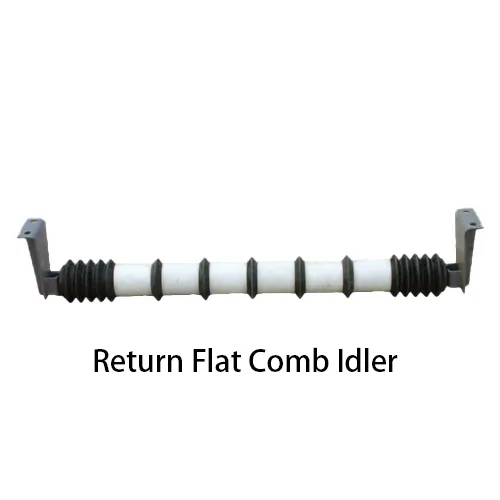 Afrikaans
Afrikaans  Albanian
Albanian  Amharic
Amharic  Arabic
Arabic  Armenian
Armenian  Azerbaijani
Azerbaijani  Basque
Basque  Belarusian
Belarusian  Bengali
Bengali  Bosnian
Bosnian  Bulgarian
Bulgarian  Catalan
Catalan  Cebuano
Cebuano  Corsican
Corsican  Croatian
Croatian  Czech
Czech  Danish
Danish  Dutch
Dutch  English
English  Esperanto
Esperanto  Estonian
Estonian  Finnish
Finnish  French
French  Frisian
Frisian  Galician
Galician  Georgian
Georgian  German
German  Greek
Greek  Gujarati
Gujarati  Haitian Creole
Haitian Creole  hausa
hausa  hawaiian
hawaiian  Hebrew
Hebrew  Hindi
Hindi  Miao
Miao  Hungarian
Hungarian  Icelandic
Icelandic  igbo
igbo  Indonesian
Indonesian  irish
irish  Italian
Italian  Japanese
Japanese  Javanese
Javanese  Kannada
Kannada  kazakh
kazakh  Khmer
Khmer  Rwandese
Rwandese  Korean
Korean  Kurdish
Kurdish  Kyrgyz
Kyrgyz  Lao
Lao  Latin
Latin  Latvian
Latvian  Lithuanian
Lithuanian  Luxembourgish
Luxembourgish  Macedonian
Macedonian  Malgashi
Malgashi  Malay
Malay  Malayalam
Malayalam  Maltese
Maltese  Maori
Maori  Marathi
Marathi  Mongolian
Mongolian  Myanmar
Myanmar  Nepali
Nepali  Norwegian
Norwegian  Norwegian
Norwegian  Occitan
Occitan  Pashto
Pashto  Persian
Persian  Polish
Polish  Portuguese
Portuguese  Punjabi
Punjabi  Romanian
Romanian  Russian
Russian  Samoan
Samoan  Scottish Gaelic
Scottish Gaelic  Serbian
Serbian  Sesotho
Sesotho  Shona
Shona  Sindhi
Sindhi  Sinhala
Sinhala  Slovak
Slovak  Slovenian
Slovenian  Somali
Somali  Spanish
Spanish  Sundanese
Sundanese  Swahili
Swahili  Swedish
Swedish  Tagalog
Tagalog  Tajik
Tajik  Tamil
Tamil  Tatar
Tatar  Telugu
Telugu  Thai
Thai  Turkish
Turkish  Turkmen
Turkmen  Ukrainian
Ukrainian  Urdu
Urdu  Uighur
Uighur  Uzbek
Uzbek  Vietnamese
Vietnamese  Welsh
Welsh  Bantu
Bantu  Yiddish
Yiddish  Yoruba
Yoruba  Zulu
Zulu idler for conveyor belt
The Importance of Idlers for Conveyor Belts
In the world of industrial and material handling operations, conveyor belts are essential components that greatly enhance productivity and efficiency. One crucial element that contributes to the effective functioning of a conveyor system is the idler. Idlers are the rollers that support the conveyor belt and play a significant role in ensuring the smooth transition of materials from one point to another. This article delves into the importance of idlers for conveyor belts, their various types, and factors to consider when selecting the right idler for your system.
What are Idlers?
Idlers are typically cylindrical rollers mounted on the conveyor frame to support and guide the conveyor belt. They create a reliable surface for the belt to move over, preventing misalignment and minimizing wear and tear. By holding the belt in place, idlers reduce friction, which not only helps maintain the efficient movement of materials but also extends the life of the conveyor system.
Types of Idlers
There are several types of idlers, each designed for specific applications and operating conditions. The most common types include
1. Carrier Idlers These are the primary idlers that support the loaded section of the conveyor belt and are usually positioned underneath the belt. They are critical for carrying the weight of materials being transported.
2. Return Idlers Located on the return side of the belt, these idlers support the belt as it returns to the loading point. Return idlers help in maintaining the belt's alignment and assist in reducing sagging.
3. Impact Idlers Positioned at loading zones, impact idlers absorb the impact of the materials dropped onto the belt. They are essential for protecting the belt from damage, especially during heavy loading operations.
4. Training Idlers These idlers help align and control the path of the conveyor belt, preventing it from drifting and ensuring it runs true. They are crucial in maintaining optimal performance and efficiency.
idler for conveyor belt

5. Specialty Idlers Depending on specific requirements, such as bulk handling or high-speed applications, specialty idlers may be designed with unique features to withstand harsh conditions and enhance performance.
Factors to Consider When Choosing Idlers
Selecting the right idler is vital for the overall performance of a conveyor system. Several factors must be considered, including
1. Load Capacity It's essential to choose idlers that can adequately support the weight of the materials being transported. Underestimating load requirements can lead to premature failure and increased maintenance costs.
2. Material of Construction Idlers can be made from various materials such as steel, rubber, or plastic. The choice of material should depend on factors such as environmental conditions, the nature of the material being transported, and expected wear and tear.
3. Alignment and Spacing Proper alignment and spacing of idlers help prevent mistracking and belt damage. An appropriate configuration will enhance efficiency and minimize the risk of operational disruptions.
4. Maintenance Requirements Choosing idlers with low maintenance requirements can significantly reduce downtime and maintenance costs. Consider idlers designed for easy access for inspections and replacements.
5. Environmental Conditions Factors such as temperature, humidity, and exposure to chemicals can influence the performance and longevity of idlers. Select idlers that are suitable for the specific environmental conditions of your operation.
Conclusion
Idlers are indispensable components of conveyor belt systems, playing a crucial role in supporting the belt and ensuring smooth material flow. When appropriately selected and maintained, they can significantly enhance the efficiency and lifespan of conveyor systems. Understanding the types of idlers and the factors involved in choosing the right one is essential for optimizing operations and reducing costs in any industrial setting. An investment in quality idlers translates to increased productivity and reduced downtime, making them a vital consideration for any material handling operation.
-
Revolutionizing Conveyor Reliability with Advanced Rubber Lagging PulleysNewsJul.22,2025
-
Powering Precision and Durability with Expert Manufacturers of Conveyor ComponentsNewsJul.22,2025
-
Optimizing Conveyor Systems with Advanced Conveyor AccessoriesNewsJul.22,2025
-
Maximize Conveyor Efficiency with Quality Conveyor Idler PulleysNewsJul.22,2025
-
Future-Proof Your Conveyor System with High-Performance Polyurethane RollerNewsJul.22,2025
-
Driving Efficiency Forward with Quality Idlers and RollersNewsJul.22,2025





























